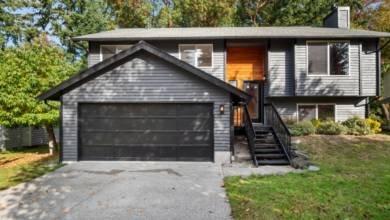
Benefits of Working with a Residential Architect on a Home Addition Project
Planning a home addition is a significant investment that affects not just your living space but also your property’s value and functionality. Whether it’s a second-story buildout or a new sunroom, collaborating with a residential architect in Atlanta ensures your vision is translated into a practical, efficient, and aesthetically cohesive extension of your home. Architects do far more than sketch blueprints, they bring technical expertise, creative solutions, and project management skills to the table.
Homeowners often underestimate the complexities of home additions. A residential architect helps you navigate these challenges, resulting in a well-integrated and future-proof design.
Design That Complements Your Existing Structure
A key advantage of hiring a residential architect is their ability to design additions that blend seamlessly with your existing home. Rather than creating a section that feels disjointed or mismatched, architects consider proportions, materials, rooflines, and circulation to maintain architectural harmony.
They analyze your home’s structural limitations, layout, and style before proposing modifications. This ensures your addition doesn’t just meet your needs, it enhances the overall property without compromising flow or appearance.
See also: The Financial Benefits of Working with a Single Home Construction Company
Functionality Meets Long-Term Value
A professionally designed home addition is more than just extra space. Architects plan with both current function and future value in mind. They optimize layouts, natural light, ventilation, and room placement to support livability while adding to market appeal.
Understanding how residential architects enhance home value and functionality is essential when undertaking an expansion. Their ability to unlock spatial potential while ensuring the addition aligns with local building codes can save both time and money during construction.
Navigating Permits, Codes, and Contractors
Home additions often require permits and must meet strict zoning laws and building codes. Architects streamline this process by preparing accurate documents, coordinating with engineers, and submitting plans for approval. Their familiarity with regulatory requirements minimizes delays and avoids costly corrections later.
They also assist in selecting the right contractors and can represent your interests throughout the construction process. This level of oversight helps ensure that the project stays on budget, on time, and aligned with the design intent.
Customized Solutions for Unique Needs
Every homeowner’s needs are different. A residential architect tailors the design to suit your lifestyle, whether it’s accommodating a growing family, creating a work-from-home zone, or designing aging-in-place solutions. Their creative thinking often leads to ideas that homeowners hadn’t considered, such as multi-functional spaces or improved traffic flow.
Their expertise helps maximize every square foot while incorporating thoughtful design elements, from window placements to storage solutions, that improve the overall user experience.
Conclusion
Working with a residential architect on a home addition project transforms what could be a stressful process into a structured, results-driven experience. Their ability to merge function, style, and compliance ensures your addition complements your home in every way. From maximizing your investment to enhancing daily living, an architect’s input is invaluable when you’re expanding your space with purpose and precision. With their support, you gain not just extra square footage but a thoughtfully designed environment that improves both your lifestyle and long-term property value.




